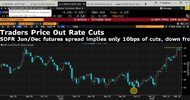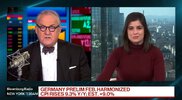- Joined
- 28 August 2022
- Posts
- 7,232
- Reactions
- 11,804
Seems to me being a touch cynical that those who could and perhaps should be mouthing off are sitting very comfortably in the back row reading comics of some description, instead of asking the hard questions.given Japan is now the clear No. 1 international holder of US Treasuries ( despite some selling to save the yen ) , yes i agree Japan might the crow in the coal-mine ( won't give you much warning of methane , but you will sure notice it is dead )
Bill Evans ? well it is easy to look good in the current crop of high-profile Australian economic commentators/professors/gurus
so yeah he is OK but did prefer some of the more provocative ones seen in the re-2020 era who would lash out with searing barbs where they thought it was needed



